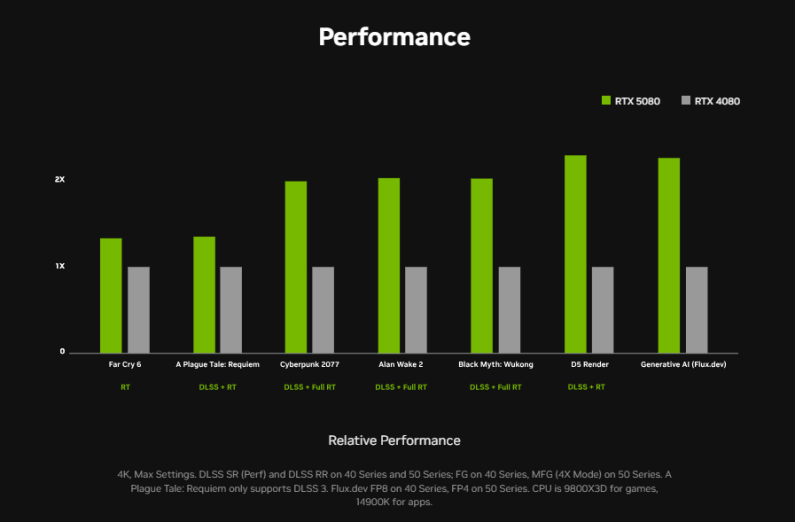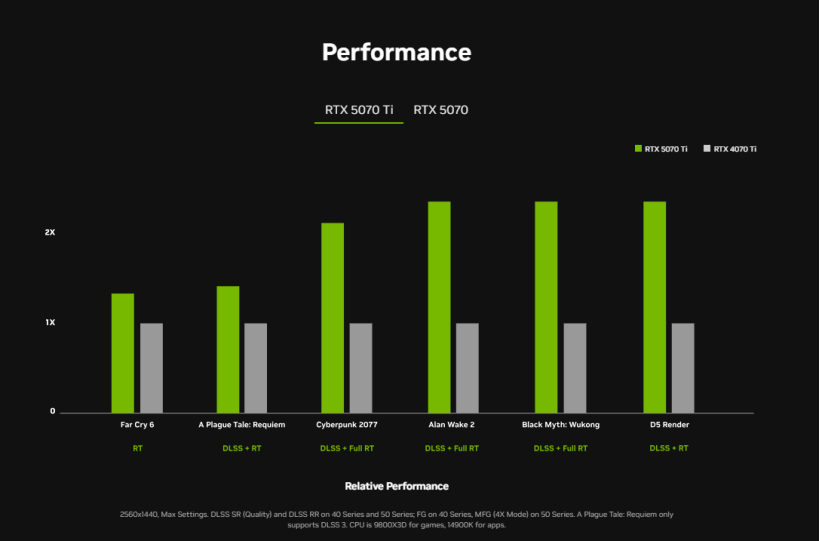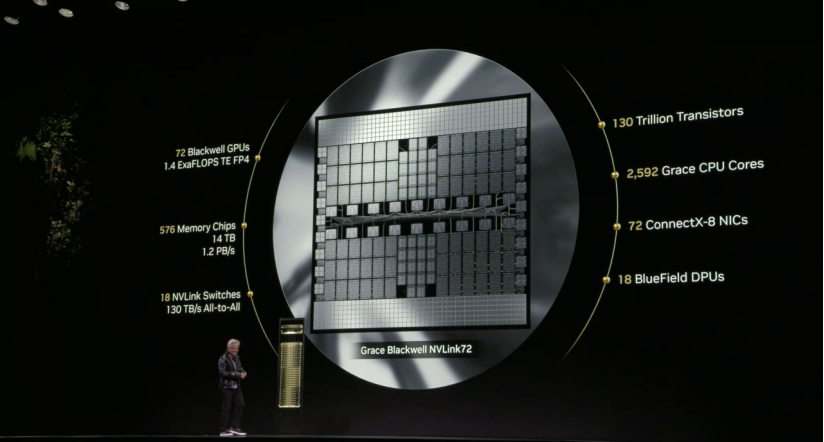
At CES 2025, NVIDIA officially introduced its new-generation RTX 50 series graphics cards, powered by the Blackwell architecture. These cutting-edge GPUs feature up to 92 billion transistors and deliver AI computing power of up to 4000 TOPS. With four AI processing units, the RTX 50 series offers three times the performance of the previous Ada Lovelace-based RTX 40 series. Additionally, the GPUs support DLSS 4 and are priced up to $1,999.
NVIDIA CEO Jensen Huang highlighted significant upgrades in the RTX 50 series compared to the RTX 40 series. Among the key innovations, the RTX 5090 stands out as the first GeForce GPU to exceed 20,000 CUDA cores, equipped with a total of 21,760 cores. This flagship model is powered by the Blackwell-based GB202 GPU and is the only graphics card to feature 512-bit 32GB GDDR7 memory. With a maximum power consumption of 575W, it surpasses the RTX 4090 by 125W. Furthermore, the RTX 50 series supports PCIe 5.0 and DP 2.1a interfaces and utilizes a 16-pin connector.

The RTX 5080, built on the PG144/147-SKU45 PCB, uses the GB203-400-A1 GPU with 84 SMs and 10,752 cores—51% fewer than the RTX 5090. In comparison, the core count difference between the RTX 4090 and RTX 4080 is 40%, showing a significant performance gap. The RTX 5080 features 256-bit 16GB GDDR7 memory with 960 GB/s total bandwidth, offering speeds up to 30 Gbps. The total board power (TBP) is 360W, a 12.5% increase over the RTX 4080 SUPER's 320W.

For the mid-range market, the RTX 5070 Ti boasts the streamlined GB203 GPU, equipped with 8,960 CUDA cores. It features 16GB of GDDR7 memory, upgraded to deliver 78% higher bandwidth than the RTX 4070 Ti, reaching 896 GB/s. With a boost clock of 2.45 GHz, the RTX 5070 Ti's performance is expected to be double that of the RTX 4070 Ti, thanks to improvements and support for DLSS 4.

The RTX 5070 will be powered by the GB205 GPU, featuring 6,144 CUDA cores and 192-bit 12GB GDDR7 memory. With a total memory bandwidth of 672 GB/s and speeds of 28 Gbps, the RTX 5070 will offer a 33% improvement in bandwidth over the current RTX 4070 models. Its TBP stands at 250W, a 14% increase over the RTX 4070 SUPER's 220W.

The RTX 50 series GPUs will be available for purchase later this month. Additionally, NVIDIA is set to release RTX 50 series laptops starting in March.
Jensen Huang also emphasized that NVIDIA's network systems, including NVLink 36 and NVLink 72, are designed to meet the needs of global data centers. Currently, the company operates approximately 45 factories, with plans to create a superchip called Grace Blackwell NVLink72, capable of utilizing 72 Blackwell GPUs or 144 chips to outperform the world's fastest supercomputers.

In addition, NVIDIA plans to launch a series of Llama-based models, such as Llama Nemotron Nano, Super, and Ultra, to cover a wide range of applications from personal computers and edge devices to large-scale data centers.




